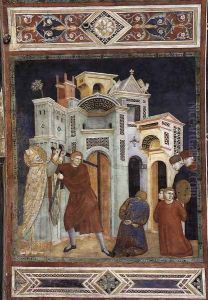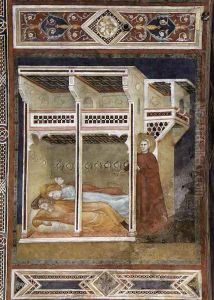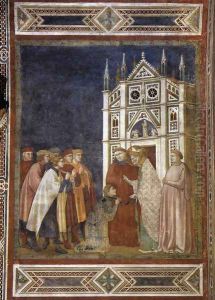Palmerino di Guido Paintings
Palmerino di Guido was an Italian painter whose life and career are mostly shrouded in the mists of the late 13th and early 14th centuries, a period that marked a significant transition in the history of European art, from the Byzantine and Medieval styles towards the more naturalistic and human-centered approach of the Renaissance. Not much is known about his early life, including the exact dates of his birth and death. However, what survives of his work suggests that he was active between the late 13th century and the early years of the 14th century, primarily in the region of Tuscany, which was a vibrant center for the arts during this period.
Palmerino di Guido's contributions to art are recognized through a limited number of surviving works and mentions in historical records. His style is indicative of the artistic transitions of his time, showing elements of the Byzantine tradition mixed with the early seeds of the Renaissance's focus on naturalism and the human figure. This blend of styles makes his work particularly interesting to art historians studying the evolution of Western art. He was part of a generation of artists who were beginning to experiment with more realistic portrayals of figures and a greater sense of depth in their compositions, setting the stage for the major changes that would unfold in Italian art over the coming centuries.
Despite the scarcity of detailed records about his life, Palmerino di Guido is believed to have been a significant figure among his contemporaries. He would have been a part of the artistic milieu that included other early Italian painters who were beginning to push the boundaries of medieval art traditions. His work, though not as well-documented as that of later Renaissance masters, contributed to the gradual shift towards more naturalistic and human-centric art that would come to define the Renaissance. The exact details of his death and the extent of his oeuvre remain uncertain, but his art provides valuable insights into the transitional period of Italian art, reflecting both the lingering influence of Byzantine iconography and the emerging Renaissance aesthetic.


